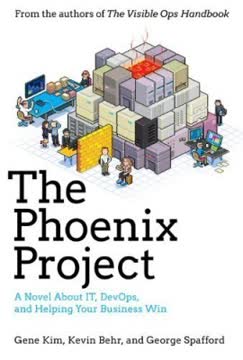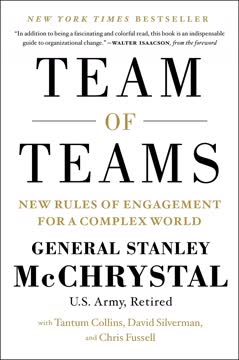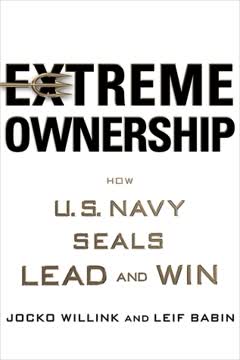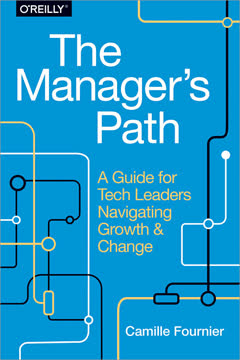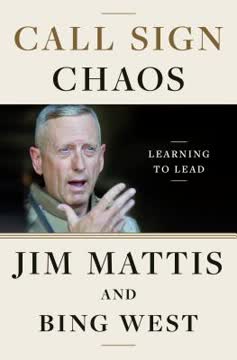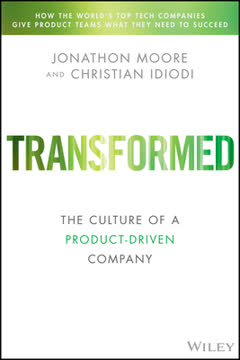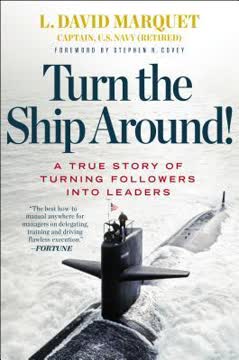つの重要なポイント
1. リーダー-フォロワーからリーダー-リーダーへのシフトでチームをエンパワーメントする
「リーダー-リーダーの構造は、リーダー-フォロワーの構造とは根本的に異なる。その核心には、私たち全員がリーダーになれるという信念があり、実際、全員がリーダーであることが最善である。」
全員をリーダーとしてエンパワーメントする。 伝統的なリーダー-フォロワーモデルは、単一の意思決定者に依存することで組織の潜在能力を制限する。リーダー-リーダーアプローチにシフトすることで、組織は全てのチームメンバーの知的能力を最大限に活用できる。この変革には以下が含まれる:
- 意思決定権を組織全体に分散させる
- 全てのレベルでイニシアティブとオーナーシップを奨励する
- 各チームメンバーに責任感とアカウンタビリティを育む
その結果、より強靭で適応力があり、高性能な組織が生まれ、全員が最良のアイデアと努力を提供する。
2. コントロールを分散して組織の能力を向上させる
「能力のないコントロールは混乱である。」
コントロールと能力のバランスを取る。 コントロールを分散することは放棄ではなく、戦略的な委任である。これを成功させるためには:
- 組織の下位レベルに移譲できる意思決定を特定する
- 能力を構築するための必要なトレーニングとリソースを提供する
- 能力が向上するにつれて意思決定権を徐々に増やす
このアプローチは、責任の増加が能力の向上をもたらし、それがさらに多くのコントロールの分散を可能にするという好循環を生み出す。重要なのは、意思決定を行う人々が効果的に行うための必要なスキルと知識を持っていることを確保することである。
3. 意図的な行動を取ってエラーを減らしパフォーマンスを向上させる
「意図的な行動を取ることは、ミスを減らし、サンタフェを運用上優れたものにするために実施した最も強力なメカニズムであった。」
意図を持って行動する。 意図的な行動とは、重要な行動を取る前に一時停止し、何をしようとしているかを声に出して示し、それから実行することを指す。この実践は:
- 自動的なミスを減らす
- エラーが発生する前にチームの介入を可能にする
- 全体的な状況認識を向上させる
意図的な行動を実施することで、組織はエラーを大幅に減らし、安全性を向上させ、全体的なパフォーマンスを向上させることができる。このメカニズムは特に高リスク環境で重要であるが、さまざまな業界に適応して思慮深く意図的な作業を促進することができる。
4. 継続的な学習とコミュニケーションを通じて明確さを受け入れる
「私たちは(どこでも、いつでも)学ぶ。」
学習文化を育む。 継続的な学習と明確なコミュニケーションは、組織の明確さに不可欠である。これを達成するためには:
- 全てのレベルで好奇心と質問を奨励する
- 知識と経験を共有するメカニズムを実装する
- 組織の目標と戦略を定期的にコミュニケートする
学習を組織文化の核心に据えることで、チームはより適応力があり、革新的で、組織の目標に一致するようになる。このアプローチは、サイロを打破し、より協力的な作業環境を育むのにも役立つ。
5. 信頼と責任の文化を育む
「人々を大切にすることは、彼らの行動の結果から守ることを意味しない。」
責任を通じて信頼を築く。 信頼と責任の文化は、リーダー-リーダーモデルの基本である。これには以下が含まれる:
- チームメンバーに成功するためのツールと権限を与える
- 個々の意思決定と行動に対して責任を持たせる
- 個人的および職業的成長をサポートする
この文化を育むことで、組織は人々が価値を感じ、エンパワーメントされ、最善を尽くす動機を持つ環境を作り出す。このアプローチは、仕事の満足度を高め、定着率を向上させ、全体的なパフォーマンスを改善する。
6. 持続可能なリーダーシップの変革のためのメカニズムを実装する
「私はこれを完全に避けることを決意した。心の持ち方を変えてから行動を変えるのではなく、まず行動を変え、その後に新しい考え方が続くようにする。」
まず行動し、後で考える。 リーダーシップスタイルの持続的な変革を実現するためには:
- 望ましいリーダーシップアプローチを具体化する特定のメカニズムを特定し実装する
- 態度だけでなく行動を変えることに焦点を当てる
- 新しい実践を習慣化するまで一貫して強化する
メカニズムの例:
- プロアクティブな思考を促す「私は意図しています...」という発言
- エラーを減らすための意図的な行動
- 望ましい行動を強化するための即時認識
具体的な行動とメカニズムに焦点を当てることで、組織はリーダーシップ文化をより効果的にシフトし、その変化を持続させることができる。
7. 短期的な指標ではなく長期的な卓越性に焦点を当てる
「エラーを避けることに焦点を当てると、本当に卓越することから目が逸れる。」
完璧ではなく卓越性を追求する。 エラー回避から卓越性の達成に焦点をシフトすることで:
- 革新と計画的なリスクテイクを奨励する
- チームが卓越したパフォーマンスを目指す動機を高める
- より前向きで未来志向の組織文化を創造する
このアプローチを実装するためには:
- 卓越性を目指す野心的な長期目標を設定する
- 成功を祝うとともに失敗から学ぶ
- エラー削減だけでなく卓越性への進捗に基づいてパフォーマンスを評価する
この心構えのシフトは、画期的な改善とよりエンゲージされた、動機付けられた労働力をもたらす。
8. 盲目的な服従よりも質問する態度を奨励する
「服従を求めるのか、それとも効果を求めるのか?」
批判的思考を重視する。 質問する態度を奨励することで:
- 複数の視点を考慮することで意思決定が改善される
- 潜在的なエラーをキャッチすることで安全性とパフォーマンスが向上する
- 継続的な改善の文化を育む
これを促進するためには:
- 質問や代替の視点を明示的に奨励する
- 懸念や提案を述べる人を報奨する
- 自分自身の仮定や意思決定を問い直すことで行動をモデル化する
このアプローチは、変化する状況に適応し、グループシンクを避けることができるより強靭な組織を作り出す。
9. イニシアティブを即座に認識し報奨する
「望ましい行動を強化するための即時認識は、明確さのためのメカニズムである。」
ポジティブな行動を迅速に強化する。 即時認識は:
- どの行動が価値があるかを明確に伝える
- 優れたパフォーマンスを継続する動機を高める
- 行動と組織の目標との関連を強化する
実装戦略:
- その場での認識のためのシステムを開発する
- 全てのリーダーシップレベルに即時のポジティブフィードバックを提供する権限を与える
- 認識が具体的で誠実であり、組織の価値に結びついていることを確保する
認識をタイムリーかつ意味のあるものにすることで、組織は文化をより効果的に形作り、望ましい行動を促進することができる。
10. 個人および組織の成長のために終わりを見据えて始める
「終わりを見据えて始めることは、組織の明確さのための重要なメカニズムである。」
明確な長期目標を設定する。 終わりの目標を見据えて始めることで:
- 個人およびチームの努力を組織の目標に一致させる
- 意思決定のための明確な方向性を提供する
- 日々の行動を大きな目的に結びつけることで動機を高める
実践的な応用:
- チームメンバーにツアー終了時の賞やパフォーマンス評価を書かせる
- 組織のための具体的で測定可能な長期目標を設定する
- 目標が関連性を持ち、インスピレーションを与えるものであることを確認するために定期的に見直し調整する
このアプローチは、全員が何をしているのかだけでなく、なぜそれをしているのかを理解することを確保し、より動機付けられた効果的なチームを生み出す。
最終更新日:
FAQ
What's Turn the Ship Around! about?
- Leadership Transformation: The book details Captain David Marquet's experience transforming the USS Santa Fe from a low-performing submarine to a top performer using a new leadership model.
- Leader-Leader Model: Marquet introduces the "Leader-Leader" model, which empowers all crew members to make decisions, contrasting with the traditional "Leader-Follower" model.
- Real-Life Application: The narrative is based on Marquet's real experiences in the U.S. Navy, offering practical strategies applicable in various organizational settings.
Why should I read Turn the Ship Around!?
- Empowerment Insights: The book provides insights into empowering employees at all levels, crucial for modern organizations.
- Practical Strategies: Readers will find actionable strategies, such as the "I intend to..." approach, encouraging proactive communication and ownership.
- Inspiring Story: Marquet's transformation of the Santa Fe is an inspiring story of leadership and resilience, appealing to those interested in improving leadership skills.
What are the key takeaways of Turn the Ship Around!?
- Shift to Leader-Leader: The book emphasizes shifting from a "Leader-Follower" to a "Leader-Leader" model, promoting shared responsibility.
- Control and Competence: Leaders should divest control while ensuring teams are competent and aligned with organizational goals.
- Cultural Change: It advocates for open communication and a focus on excellence rather than merely avoiding mistakes.
What are the best quotes from Turn the Ship Around! and what do they mean?
- "Leadership is a choice, not a position.": This quote encourages individuals to take initiative and act as leaders regardless of their formal title.
- "Don’t move information to authority, move authority to the information.": It promotes decision-making by those closest to the information, enhancing efficiency.
- "I intend to...": This phrase encourages proactive communication, shifting the mindset from waiting for orders to taking initiative.
What is the Leader-Leader model in Turn the Ship Around!?
- Empowerment Focus: The model empowers all members to take initiative and make decisions, contrasting with the Leader-Follower model.
- Shared Responsibility: Everyone is responsible for their actions, fostering ownership and accountability.
- Practical Implementation: Marquet provides mechanisms like the "I intend to..." approach to implement this model.
How does Captain Marquet suggest implementing change in Turn the Ship Around!?
- Start with Control: Divest control from leaders and distribute it among team members, trusting them to make decisions.
- Encourage Open Communication: Create an environment where team members feel comfortable sharing thoughts and ideas.
- Focus on Excellence: Shift focus from avoiding mistakes to striving for excellence, improving performance and satisfaction.
How does Marquet address the issue of employee disengagement in Turn the Ship Around!?
- Understanding Frustration: He highlights the frustration of employees whose ideas are stifled in hierarchical structures.
- Creating a Call to Action: Emphasizes motivating employees to engage and take ownership by recognizing their contributions.
- Building a Supportive Culture: Advocates for a culture that supports initiative and creativity, allowing employees to feel valued.
What mechanisms does Marquet suggest for fostering competence in Turn the Ship Around!?
- Training and Development: Ongoing training ensures team members are competent in their roles, with opportunities for skill enhancement.
- Clear Expectations: Clarity in goals and expectations helps employees align efforts and make informed decisions.
- Encouraging Initiative: Create an environment where employees feel empowered to take initiative and make decisions.
What is the significance of "Embrace the Inspectors" in Turn the Ship Around!?
- Open to Feedback: Encourages teams to welcome external scrutiny and feedback for improvement.
- Learning from Others: Inviting inspectors to share insights helps teams learn best practices and avoid past mistakes.
- Control Over Destiny: Embracing oversight empowers teams to view challenges as growth opportunities.
How does Marquet define "Take Deliberate Action"?
- Mindful Decision-Making: Involves pausing before tasks to ensure awareness of actions and consequences, reducing errors.
- Team Communication: Encourages vocalizing intentions before acting, fostering teamwork and mutual support.
- Error Prevention: This approach significantly reduced operational errors on the USS Santa Fe.
How can leaders implement the concepts from Turn the Ship Around! in their organizations?
- Assess Current Practices: Evaluate existing leadership models and identify areas for improvement.
- Foster a Culture of Learning: Promote continuous learning and improvement through feedback and training.
- Encourage Open Communication: Create an environment where team members feel comfortable sharing ideas and feedback.
What role does trust play in the leader-leader model?
- Foundation of Empowerment: Trust is essential for empowering individuals to take initiative and make decisions.
- Building Relationships: Open communication and transparency build trust, enhancing collaboration.
- Long-Term Success: Trust creates a positive work environment, leading to higher morale and retention rates.
レビュー
本書『Turn the Ship Around!』は、その革新的なリーダーシップアプローチで高く評価されている。読者は、マルケの実践的なアドバイスがチームメンバーのエンパワーメントとリーダー-リーダーモデルの促進に役立つと感じている。多くの人がこの本を魅力的で、さまざまな業界に適用可能だと考えている。潜水艦の文脈は独自の視点を提供するが、軍事用語が難しいと感じる読者もいる。批評家は、文章のスタイルが簡素すぎると指摘するが、ほとんどの人は核心となる概念が価値あるものだと同意している。全体として、この本は組織のリーダーシップと従業員のエンパワーメントに対する新鮮な視点で広く推奨されている。
Similar Books


